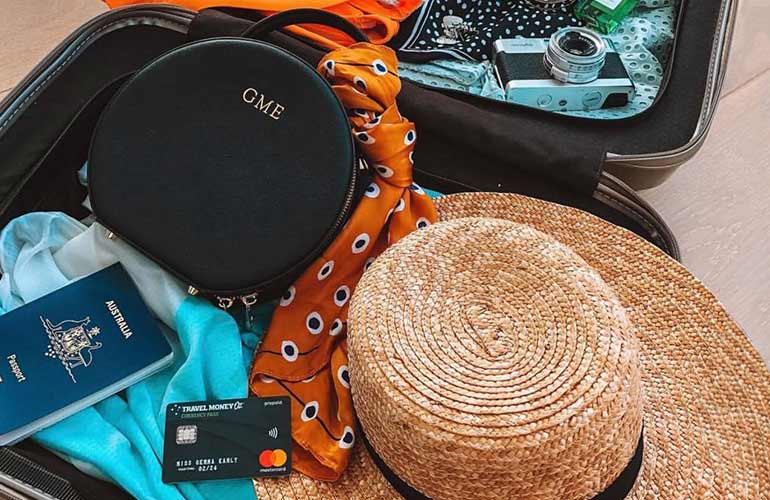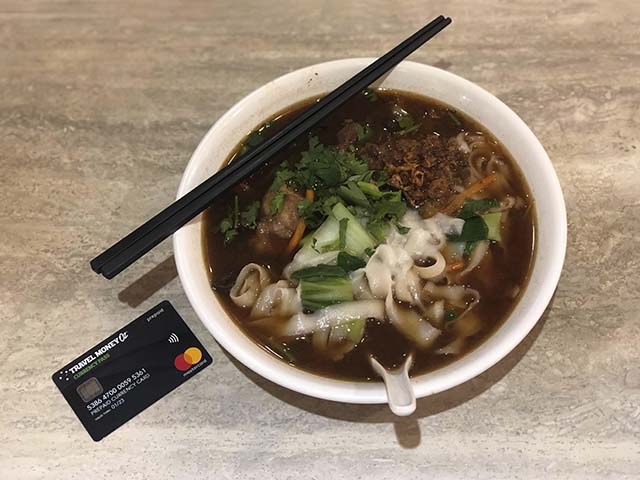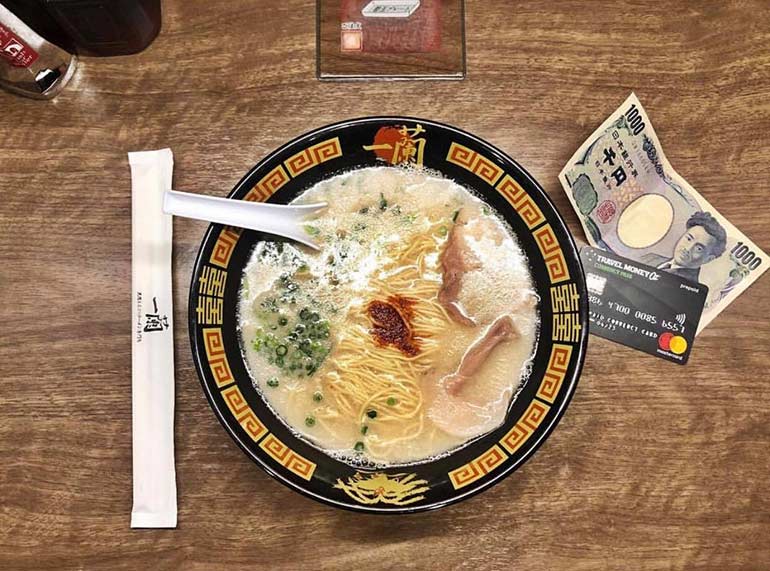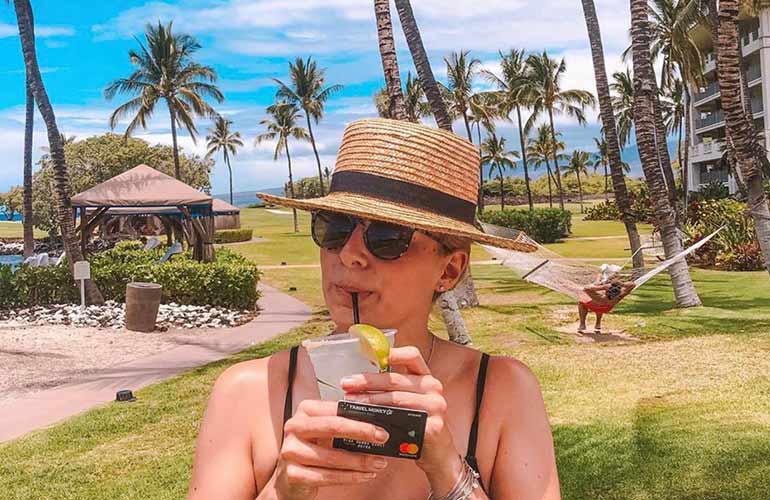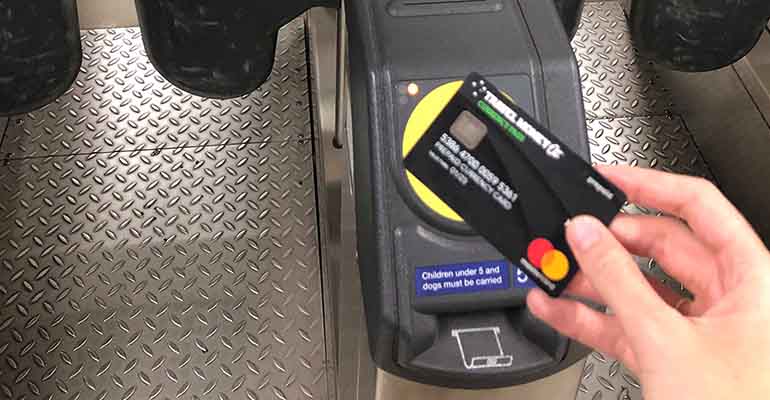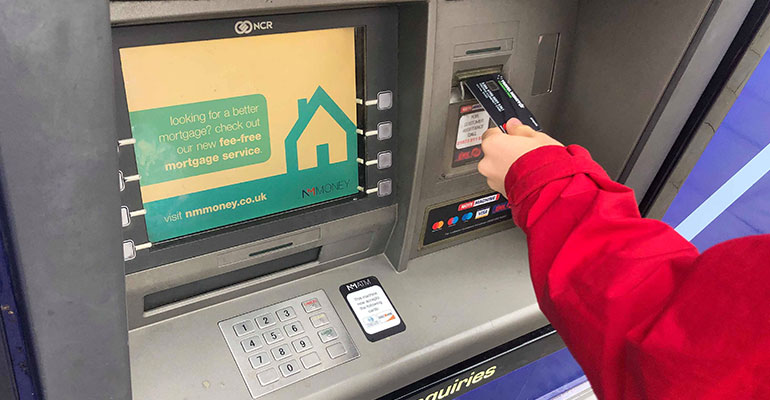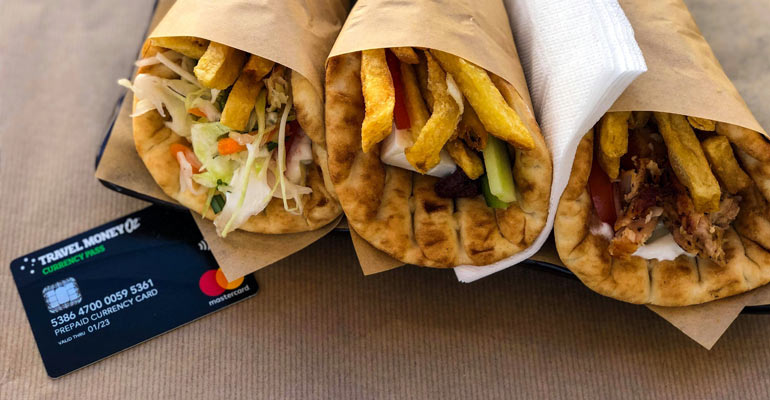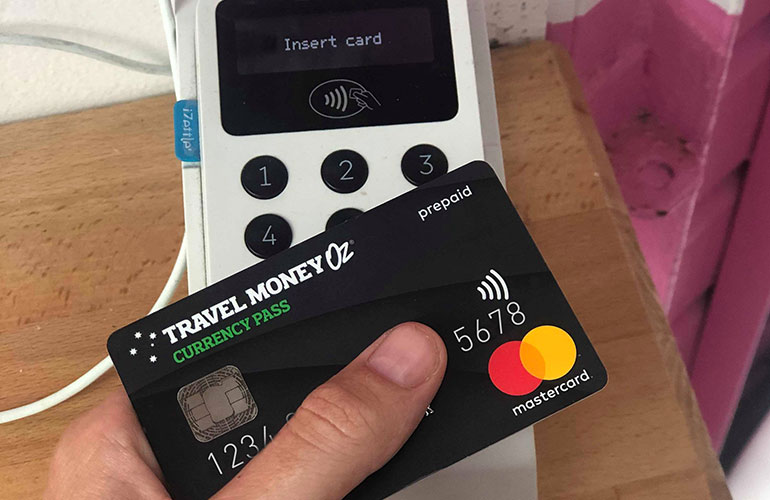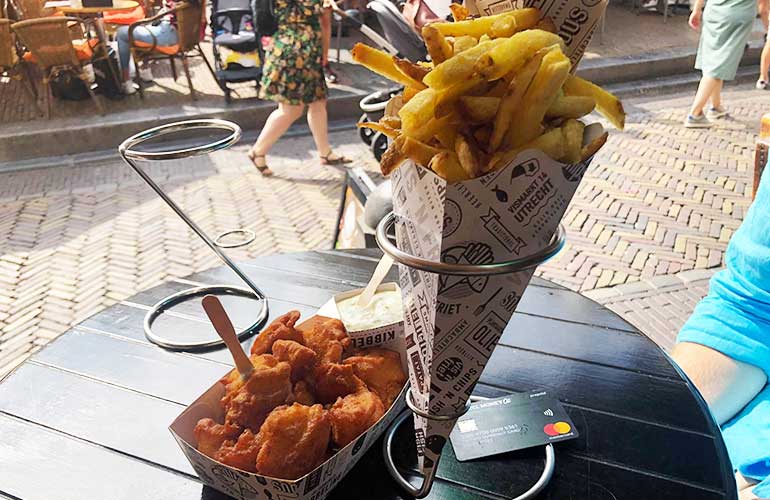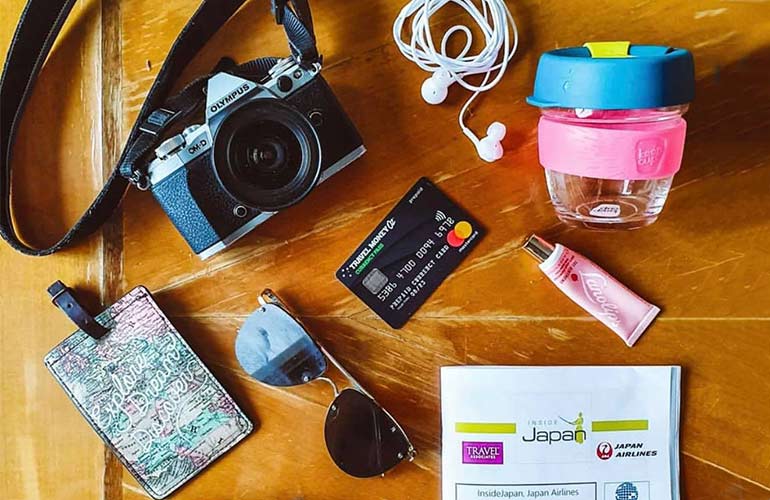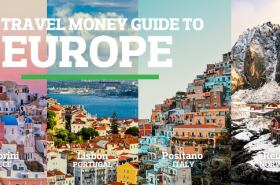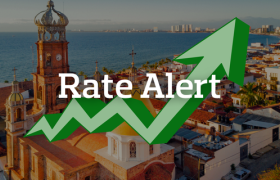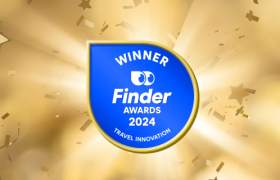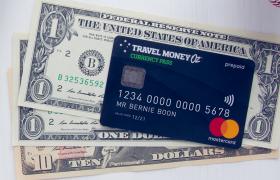The Travel Money Oz Currency Pass is a nifty little thing. Who knew a tiny (and stylish) piece of black plastic could open you up to a world of opportunities?
We’re pretty proud of it, and for a good reason too. Our team has given their Currency Passes (and bank accounts) a workout around the globe, collecting heaps of tips, tricks and souvenirs.
We’ve compiled a list of their experiences and recommendations for using the Currency Pass around the world to ensure you get the most out of your experience and travel money the next time you travel.
First things first, if you’re new to the whole prepaid travel card game here are some basics:
- You load the card with your own money. That means you can lock in a rate and don’t have to worry about coming home to an unsavoury credit card debt.
- The Currency Pass is powered by Mastercard, this means it is accepted globally at shops and ATMs wherever there is a Mastercard logo.
- The card is linked to an app where you can track your spending, top-up funds and keep track of all the countries you have visited.
- The card can be purchased online or in-store.
- You can load up to 10 currencies onto your Currency Pass including EUR, GBP, JPY, SGD, HKD, USD, CAD, THB, NZD and the AUD. If the currency of your destination isn’t included on the card, you can just load it with AUD, and it will automatically convert to the correct currency when you make a purchase. We told you – nifty!
Using your Currency Pass in Asia
Throughout most of Asia, cash still remains king. With this in mind, in bigger cities, there will be plenty of ATMs and vendors that will accept your Currency Pass. We recommend having 60% of your travel funds loaded onto the card and 40% available as cash. Keep in mind that the further you travel from a big city, the less likely you are to find ATMs and merchants that accept card, so always have cash on hand just in case.
Card tip: Make sure you always select credit when making a transaction.
Singapore – Singapore dollar
This metropolis is super card-friendly. The only place you will be unlikely to use a card is at Hawker Centres and smaller markets. If you use an ATM, be sure to check what fees they charge above the $3.50 fee associated with the card.
Thailand – Thai baht
Most ATMs charge a minimum of 200baht for an ATM withdrawal. This is in addition to the flat 80baht charged by the card. Save money by making bigger withdrawals to limit the number of fees you will need to pay. There are plenty of malls and convenience stores that will allow you to pay with a card. If you are renting a scooter or bike, we don’t recommend using your Currency Pass for the bond as it may take 30 days for the money to become available.
Japan – Japanese yen
Use ATMs located inside post offices and 7/11 stores where you’ll be prompted to use English. ATM fees vary; however, you will pay a 260yen base fee charged by the card. Shops in major cities like Tokyo will have plenty of merchants that accept card, just ask before purchase if you are unsure. If you are travelling to Japan, we recommend getting a personalised Currency Pass, as some merchants may not accept cards that don’t have your name on the front. The personalised cards take 7-10 business days to arrive and will have your name printed on the card. The alternative is an ‘instant issue’ card that won’t have your name. Both cards can be used across the globe, however the personalised versions will avoid any questions from vendors.
Hong Kong – Hong Kong dollar
Hong Kong is considered to be one of the major financial hubs of the world, so don’t stress about being able to access your money as there are ATMs everywhere. There is no standard ATM fee in Hong Kong apart from the 18HKD imposed by the card. As with many ATMs around the world, you will often be asked if you want to pay in your home currency, which would be AUD in this case. We recommend opting out of this and using the HKD loaded onto your card to avoid excess fees.
The following countries currencies aren’t available on the Currency Pass or many prepaid travel cards for that matter. Instead, load your card with AUD, and when you transact, it will convert to the appropriate currency using the applicable Mastercard Spend rate or ‘rate of the day’. Keep an eye out for the ATM fee which could be charged on top of the AUD 3.50 fee charged by the card.
Cambodia – Cambodian riel
ATMs are few and far between in Cambodia, so when you see one ensure you withdraw large amounts, so you aren’t stranded without any cash. USD is widely accepted in Cambodia, if not often preferred, so you can load up your Currency Pass with USD instead of AUD. Further to this, as you move towards the Thai border, merchants will start accepting THB, which can also be loaded onto your card. Finally, when you do withdraw cash aim to get amounts like $340 or $390 so, you are guaranteed to get smaller denominations.
Vietnam – Vietnamese dong
When purchasing food, drinks and souvenirs in Vietnam, you will need cash. ATMs are relatively easy to find in bigger cities; however, they can charge a fee of between 25,000 and 50,000 VND.
Card tip: Forgot your pin? You can reveal your pin over the phone or via a desktop computer.
Instagram: @earlybirdPhilippines – Philippine peso
ATMs can be hard to come by in the Philippines, and when you do find one, they will often only dispense 1000peso notes. Aim to break these notes at bigger shops and restaurants as many smaller vendors won’t have enough change. Most ATM’s also charge a 250peso fee on top of any card fees, like the $3.50AUD charged by the Currency Pass. Aside from ATM’s, hotels and bigger restaurant chains, cash will be your best bet.
Using your Currency Pass in Europe and the Middle East
Egypt – Egyptian pound
When travelling to Egypt, we recommend loading your Currency Pass with both AUD and USD. ATMs are easy to come by in major cities, just be mindful of card skimming scams. Withdrawing cash at ATMs will ensure your bills are clean and damage-free, which is important in Egypt as many vendors won’t accept damaged notes.
Morocco - Moroccan dirham
Mastercard is widely accepted throughout bigger towns and cities with ATMs readily accessible. With this in mind, ATMs are notorious for running out of cash or being broken, so always ensure you have plenty of money on hand, so you’re not stranded without funds. Further to this, most Moroccan ATMs have a max withdrawal amount of 2,000MAD, or about 200USD. ATM fees vary based on the vendor, so do some research to avoid paying too much above the $3.50AUD charge from the card.
UK – Great British pound
Most of the UK is super cash-friendly, with the majority of merchants accepting, if not preferring cards. We’ve written about using the Currency Pass in London, a city where card is definitely at the forefront of daily transactions.
In London, you can use your Currency Pass in place of an Oyster Card on the metro. Further to this, when visiting markets, many vendors have done a complete flip to what you would find in Asia and only accept cards. It makes the whole process super quick and prevents you from having to sort through your pounds.
With this in mind, you generally don’t need to frequent an ATM. Should you need to, however, there are a few free ATMs, and you’ll only have to pay the 2GBP card fee. If you are unable to find a free ATM, others will charge between 1.50 and 2 pounds for the transaction.
Euro Countries
A total of 37 countries use the Euro with most situated in, you guessed it, Europe. This makes it super easy when travelling through Europe as you don’t have to worry about changing currencies.
Countries in the European Union are pretty standardised in terms of currency and accessibility, so the following points are a good rule of thumb:
- ATMs are easy to find unless you are in small towns or islands (think Ios in Greece or up a mountain in France)
- Most vendors, including those at markets, will accept cards. It’s always a good idea to have cash on hand for peace of mind, though.
- ATM fees vary depending on the bank and country; however, the card has a standard fee of 2.50 euros.
- Avoid using your card for pre-authorisation for car hire or hotel bonds as it can take up to 30 days for the funds to be released
- If promoted, either by a merchant machine or an ATM, to pay in your home currency always opt-out to avoid paying extra fees.
If you’re keen on country-specific information, we have in-depth information on the following countries.
Using your Currency Pass in the Americas
USA – United States dollar
Use your Currency Pass with ease in the States, however, make sure you have cash on hand for tips, public transport and street food vendors. When paying with a card, you will be prompted by the machine to add a tip, 15% is the standard amount.
ATMs are super easy to find and most charge between $2.50 and $5 for a withdrawal. This is above the $2.50USD charged by the card. All things considered, limit your ATM transactions to avoid paying unnecessary money on fees that could otherwise be spent on hotdogs.
USD is a widely accepted currency, so your funds can be used outside of the States as well.
Canada – Canadian dollar
Similar to the USA and Australia, cards are almost universally accepted throughout Canada unless you’re super far north hanging out with the moose. If paying for a service (think restaurants, bars, beauty salons etc.), you’ll need to tip between 10% and 25% depending on how you deem the service quality. If paying with your Currency Pass this will be added on via the machine when paying, and you can choose your preferred tip amount. The amount of tax added to each transaction varies with each province; however, most are between 10 and 15%.
ATMs are easy to find and charge a fee of between $2 and 5 Canadian dollars. This is on top of the $3.50 charged by the card.
Using your Currency Pass in the South Pacific
New Zealand – New Zealand dollar
Card access and payment methods across the ditch is pretty similar to that of Australia, with almost 70ATMs for every 100,000 adults. Your Currency Pass is perfect for paying for food, drinks, and all of your adrenaline-filled activities. It’s less perfect for things like your car or motorhome hire pre-authorisation, as those funds can take up to 30 days to be released back onto your card.
Your maximum daily withdrawal limit is around $2000, depending on the vendor. Keep an eye out for individual ATM fees charged above and beyond the $3.50NZD charged by the card.
Fiji - Fijian dollar
Fiji is a tricky one, with ATMs and card-accepting merchants harder to find. With this in mind, if you do spot an ATM, it’s best to take advantage of it and get enough cash out to cover you until you find another. Most Fijian ATM’s charge about 5 Fijian dollars per withdrawal in addition to the $3.50AUD charged by the card.
Your Currency Pass is perfect if you’re staying at resorts and hotels. Most will allow you to accumulate a tab which can be paid with your Currency Pass upon departure.
Vanuatu – Vanuatu vatu
Vanuatu is comprised of 83 islands, 65 of which are inhabited. With this in mind, we can’t guarantee all 65 will have access to card and ATM facilities. When on bigger islands and major cities, you can stock up on cash from an ATM, however, most have a daily withdraw limit of $600AUD equivalent. Lucky everything over there is super cheap!
If your destination wasn’t covered, or you would like more information on the Currency Pass, feel free to visit a Travel Money Oz store close to you. Here you can purchase your card and stock up on currency ready for your next overseas adventure.
This blog is provided for information only and does not take into consideration your objectives, financial situation or needs. You should consider whether the information and suggestions contained in any blog entry are appropriate for you, having regard to your own objectives, financial situation and needs. While we take reasonable care in providing the blog, we give no warranties or representations that it is complete or accurate, or is appropriate for you. We are not liable for any loss caused, whether due to negligence or otherwise, arising from use of, or reliance on, the information and/or suggestions contained in this blog.
Mastercard Prepaid Management Services Australia Pty Ltd (ABN 47 145 452 044, AFSL 386 837) arranges for the issue of the Currency Pass in conjunction with the issuer, EML Payment Solutions Limited ('EML') ABN 30 131 436 532 , AFSL 404131. You should consider the Product Disclosure Statement for the relevant product available at Travel Money Oz's website before deciding to acquire the product. Any advice does not take into account your personal needs, financial circumstances or objectives and you should consider if it is appropriate for you. Mastercard and the circles design are registered trademarks of Mastercard International Incorporated.. Exchange rates for initial loads and subsequent reloads made using methods available via Travel Money Oz's website will be set at the prevailing exchange rate set out at Travel Money Oz's website at the time of your request, provided you settle the transaction within four hours. Different exchange rates apply for loads initiated using other methods. If you initiate a load or reload other than via Travel Money Oz's website, the exchange rate applied will be the prevailing exchange rate at the time the payment is processed and the funds are received into your facility. For more information on how exchange rates are set and applied, please see the Product Disclosure Statement.

